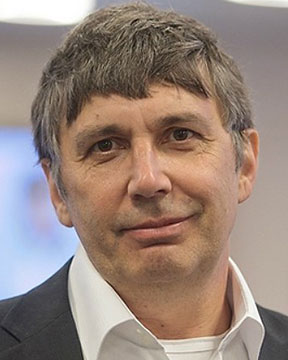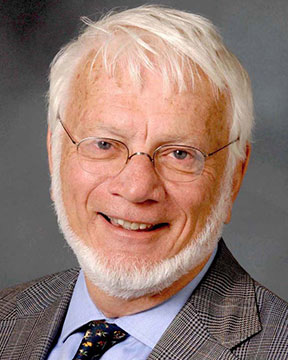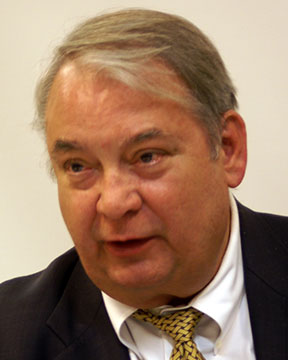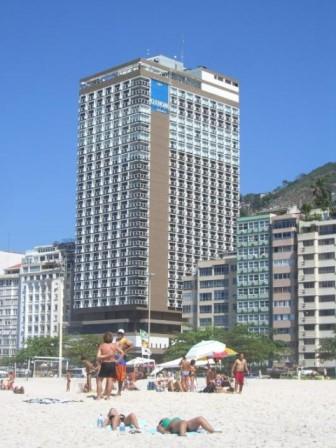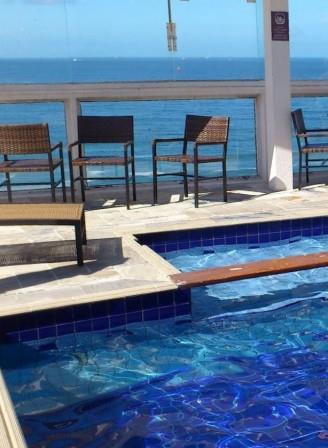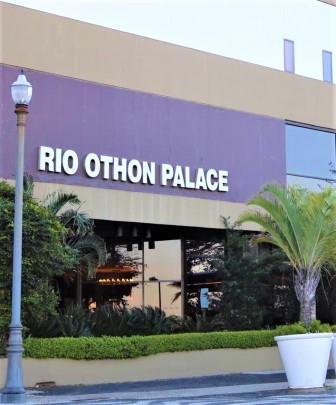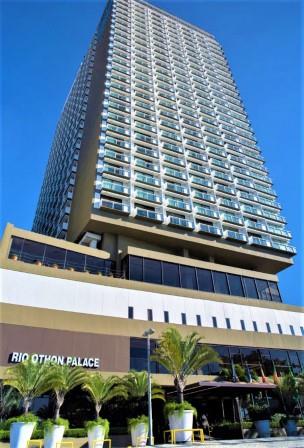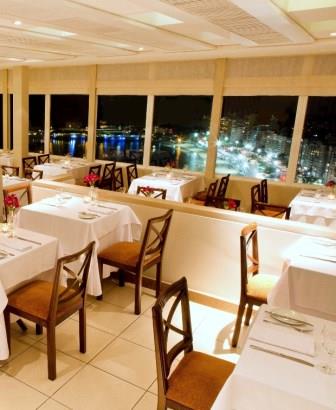ORALS
SESSION: IronMonAM-R1
| Afonso International Symposium on Advanced Sustainable Iron and Steel Making(6th Intl. Symp. on Advanced Sustainable Iron and Steel Making) |
| Mon Nov, 5 2018 / Room: Mar Azul (50/1st) | |
| Session Chairs: Florian Kongoli; Fausto Varela Cançado; Session Monitor: TBA |
12:35: [IronMonAM04] Plenary
FLOGEN CONTOP Design, Decision-Making, Control, Optimization and Automation System Applied at Brazilian Blast Furnaces Paulo
Afonso Gomes1 ; Marcos
De Souza
2 ; Florian
Kongoli
3 ;
1Consultant, Belo Horizonte, Brazil;
2FLOGEN Technologies, Sao Paulo, Brazil;
3FLOGEN Technologies Inc., Mont-Royal, Canada;
Paper Id: 417
[Abstract] FLOGEN Technologies Inc. has implemented and commissioned FLOGEN CONTOP, a Design/Decision-Making/Control/Optimization/Automation System at various blast furnaces of pig iron producers in Brazil.
The system makes instantaneously a complete optimization of all raw materials including limestone, silica, air and oxygen volumes in order to achieve specific targets according to the needs of the company. The main achievements of the implementation of the FLOGEN CONTOP system were the increase of the pig iron production by about 10%, the decrease of total consumption of charcoal (breeze and fines) by about 5%, the increase of fines injected through the tuyeres, a better control of pig iron and slag temperatures, minimization of silica addition (less charcoal consumption), a better control of pig iron composition (mainly Si and P), and complete mass and energy balance.
The CONTOP system was also used to determine the annual procurement strategies and different scenarios and to determine raw material cost-based scenarios regarding productivity, fuel consumption and to develop specific useful scenarios for this purpose.
CONTOP increased productivity and reduced cost up to the highest designed limit of the technology. CONTOP also changed the way of operating from a reactive wait-the-lab-results-approach to a proactive forecast-and-act approach.
13:00 LUNCH
SESSION: IronMonPM2-R1
| Afonso International Symposium on Advanced Sustainable Iron and Steel Making(6th Intl. Symp. on Advanced Sustainable Iron and Steel Making) |
| Mon Nov, 5 2018 / Room: Mar Azul (50/1st) | |
| Session Chairs: Juergen Antrekowitsch; Session Monitor: TBA |
16:20: [IronMonPM210] Plenary
Energy, Environment and Economic Aspects of Orien Technology Genrikh
Dorofeev1 ; Florian
Kongoli
2 ;
1Ferro-Technology, Moscow, Tula, Russian Federation;
2FLOGEN Technologies Inc., Mont-Royal, Canada;
Paper Id: 375
[Abstract] In a previous publication at FLOGEN SIPS 2016, ORIEN Technology was introduced as a new technology that is compact, energy intensive and self-sufficient. It is also environmentally friendly with numerous advantages compared to the classical iron and steel production technologies.
In a subsequent paper at FLOGEN SIPS 2017, the basic physicochemical principles of this process were described. This included its special characteristics of direct liquid-state reduction of unique iron-ore cold-pressed briquettes which simultaneously achieve the reduction of iron ore out of the briquettes and convert it into steel. This process is performed in a single electric furnace unit and produces a unique iron melt of a special type in which the carbon exists in a non-equilibrium colloidal form that can be controlled to vary widely from 0.04% to 30%.
This paper describes various unique characteristics and advantages of this process in terms of energy saving, environmental protection, economy and steel quality.
References:
[1] Dorofeev G and Kongoli F. Orien Technology, A Sustainable Paradigm Shift In Iron And Steel Industry. In: Kongoli F, Akiyama T, Nogami H, Saito K, Fujibayashi A, editors. Sustainable Industrial Processing Summit SIPS 2016 Volume 6: Yagi Intl. Symp. / Metals & Alloys Processing. Volume 6. Montreal (Canada): FLOGEN Star Outreach; 2016. p. 386-393.
[2] Dorofeev G and Kongoli F. Basic Physicochemical Principles of ORIEN Process - A Direct Iron Ore to Steel Technology. In: Kongoli F, Conejo A, Gomez-Marroquin MC, editors. Sustainable Industrial Processing Summit SIPS 2017 Volume 9: Iron and Steel, Metals and Alloys. Volume 9. Montreal (Canada): FLOGEN Star Outreach; 2017. p. 116-126
[3] G.A. Dorofeev, P.R. Yantovskiy, K.G. Smirnov, Ya.M.Stepanov. ORIEN Process for Smelting High-Quality Steels from Ore and Energy Raw Materials on the Principle of Energy-Self-Supplying. In: Ferrous metals. Volume 5. 2017. p.17-22.
[4] G.A. Dorofeev and etc. The Method of Liquid-Phase Production of Iron of Direct Reduction. Patent of the Russian Federation No. 2511419.
[5] G.A. Dorofeev and etc. The method for Steel Smelting in Electric Arc Furnace and Electric Arc Furnace. Patent of the Russian Federation No. 2539890.
[6] Patent of the Russian Federation No.2610975. The method for steel smelting in electric arc furnace. G.A. Dorofeev and etc.
[7] A.G. Shalimov, A.E. Semin, M.P. Galkin, K.L. Kosyrev. Innovative Development of Electric Steel Smelting: Monograph. Metallurgizdat; 2014. p.306
[8] L.A. Schulz - M. Elements of Non-Waste Technology in Metallurgy: A Textbook for Universities. In: Metallurgy; 1991. p.174.
[9] Yu.S. Yusfin, A.A. Gimmelfarb, N.F. Pashkov–M. New Metal Production Processes (Iron Metallurgy): Textbook for Universities. In: Metallurgy; 1994. p.320.
SESSION: Non-ferrousMonPM1-R7
| 6th Intl. Symp. on Sustainable Non-ferrous Smelting and Hydro/Electrochemical Processing |
| Mon Nov, 5 2018 / Room: Pontal (50/2nd) | |
| Session Chairs: Pavel Kozlov; JiWhan Ahn; Session Monitor: TBA |
14:00: [Non-ferrousMonPM105] Plenary
A New Sustainable Process for the Gasification Coal Fines and Recovering of Metals and Alumosilicates from their Ashes Valentin
Tsymbal1 ; Inna
Rybenko
1 ; Alexey
Olennikov
2 ; Pavel
Sechenov
1 ; Florian
Kongoli
3 ;
1Siberian State Industrial University, Novokuznetzk, Russian Federation;
2Tyumen State University, Tyumen, Russian Federation;
3FLOGEN Technologies Inc., Mont-Royal, Canada;
Paper Id: 208
[Abstract] This new process makes possible the gasification of any pulverized coal waste in a suspended layer of slag and produces a synthetic gas, various metals that are simultaneously reduced from the coal ash and a highly porous aluminosilicate slag-microspheres that can be used in various fields. The input stream consists only of coal from waste and other reactants, including oxygen for burning the coal are obtained internally within the same process flowsheet.
This process is based on the previously developed jet-emulsion reactor technology SER, intended for direct reduction of pulverized metallurgical wastes and ores. It is a sustainable process since it does not produce any waste and is energetically self-sufficient. It can also be designed in a mobile version that can be placed near waste generation sites or in remote places from electrical networks.
References:
[1] V.P. Tsymbal, S.P. Mochalov, I.A. Rybenko, R.S. Ayzatulov, V.V. Sokolov, A.G Padalko, V.I. Kozhemyachenko, S.Y. Krasnopyorov, K.M. Shakirov, S.N. Kalashnikov, L.A. Ermakova, A.A. Olennikov, A.M. Ognev, S.V. Szczepanov, A.A. Rybushkin, E.V. Suzdaltsev, Moscow: Metallurgizdat, (2014) 488.\n
[2] V.P. Tsymbal, A.A. Olennikov, V.I, Kozhemyachenko, I.A. Rybenko, F. Kongoli, SIPS 2015 (Sustainable Industrial Processing Summit), Volume 2, (2015) sips15_2_453FS.\n
[3] V. Tsymbal, A. Olennikov, I. Rybenko, V. Kozhemyachenko, E. Protopopov, F. Kongoli, Sustainable Industrial Processing Summit & Exhibition SIPS 2016 Volume 1: FLOGEN Star Outreach. (2016) 214-227.\n
[4] V. Tsymbal, A. Olennikov, I. Rybenko, P. Sechenov, F. Kongoli, Sustainable Industrial Processing Summit & Exhibition SIPS 2017 Volume 9: FLOGEN Star Outreach. (2017) 104-115.\n
[5] V.P. Tsymbal, S.P. Mochalov, I.A. Rybenko, Yu.V. Tsymbal, Patent 2371482 Russia C1, Publ. 27.10.2009, Bul. 30.\n
[6] G.A. Terentev, V.M. Tyukov, F.V. Smal, Мoscow, Chemistry (1989) 271.\n
[7] N. Plate, Journal Science and life (2004) 11, 66-68.\n
[8] G-D. Shilling, B. Bonn, U. Kraus, Мoscow, Nedra (1986) 175.\n
SESSION: Non-ferrousMonPM1-R7
| 6th Intl. Symp. on Sustainable Non-ferrous Smelting and Hydro/Electrochemical Processing |
| Mon Nov, 5 2018 / Room: Pontal (50/2nd) | |
| Session Chairs: Pavel Kozlov; JiWhan Ahn; Session Monitor: TBA |
14:25: [Non-ferrousMonPM106] Keynote
Feasibility of Producing Caustic Calcined Magnesia in Multiple Hearth Furnaces Musa
Rizaj1 ; Nurten
Deva
2 ; Edward Z.
Obrien
3 ; Florian
Kongoli
4 ;
1Prishtina University, Prishtina, Kosovo;
2Public University of Mitrovice - Isa Boletini - , Faculty of Geosciences, Republic of Kosova, Mitrovice, Kosovo;
3FLOGEN Technologies, Wilmington, United States;
4FLOGEN Technologies Inc., Mont-Royal, Canada;
Paper Id: 386
[Abstract] The magnesite (MgCO<sub>3</sub>) obtained from the magnesite mine in Strezovc, Kosovo is used as the raw material to produce caustic calcined magnesia (CCM) using roasting in rotary furnaces. The process takes place at temperatures between 600-850°C, which enables complete dissociation of magnesium carbonate and produces CCM as a very active powder. The ore enters at one end of the rotary furnace, passes through it in rotary movement, while the temperature increases and CCM is obtained at the end of the furnace. One the disadvantages of this process is the large amount of dust in the gas that reaches up to 30-35% of the total amount of raw materials. An alternative technology of producing CCM is the Multiple Hearth Furnace, which is a vertical furnace with a number of circular hearths on top of each other, a central shaft, rakes and rabble arms. The ore enters in the upper parts of the furnace and moves toward the floor through multiple hearths while gases go in opposite directions, heating the materials that come down towards the floor. The object of this work is to evaluate, in cooperation with FLOGEN Technologies Inc. Canada/USA, the feasibility of producing CCM in the Multiple Hearth Furnace instead of the rotary furnace in terms of technical, economic, and environmental aspects.
SESSION: Non-ferrousMonPM2-R7
| 6th Intl. Symp. on Sustainable Non-ferrous Smelting and Hydro/Electrochemical Processing |
| Mon Nov, 5 2018 / Room: Pontal (50/2nd) | |
| Session Chairs: Shefik Imeri; Andrej Ivanič; Session Monitor: TBA |
15:55: [Non-ferrousMonPM209] Invited
Production of Glass Wool From the Liquid Slag of a 42 MW Electric Arc Furnace for Fe -Ni Production in Newco Ferronickel Shefik
Imeri1 ; Florian
Kongoli
2 ;
1MIM-GOLESH, Prishtina, Kosovo;
2FLOGEN Technologies Inc., Mont-Royal, Canada;
Paper Id: 60
[Abstract] The liquid slag with chemical composition 55- 70 % SiO<sub>2</sub>; 0 - 7 % Al<sub>2</sub>O<sub>3</sub>; 0 - 5 % Fe<sub>2</sub>O<sub>3</sub>; 5 - 13 % CaO and 0 -5 % MgO, is sufficient raw material for glass wool production [1]. Part of the electric arc furnace slag, which is currently being discharged as a sterile material, can be used directly from a 42 MW electric arc furnace for Fe-Ni production, in a liquid state to produce glass wool. The liquid slag from the electric arc furnace flows continuously through a special channel via a feeder to the fiberizing machine for the fiberizing process (creation of the fibers), and the blanket then passes through a curing oven, normalizing its structure and achieving its final thickness as a final glass wool product. Glass wool production as a new product will have positive impacts of increasing the profits of the company and significantly decreasing the production cost of Ni. In a subsequent future article, an overall glass wool production line, with all details and technical explanations will be presented.
References:
[1] Analysis of the composite materials having a structure of the mineral fibers based on the non-invasive spectroscopic methods. Wioleta ŚMISZEK-LINDERT, Anna BAJOREK, Jerzy KUBACKI.(CHEMIK 2015, 69, 7, 411-418)




